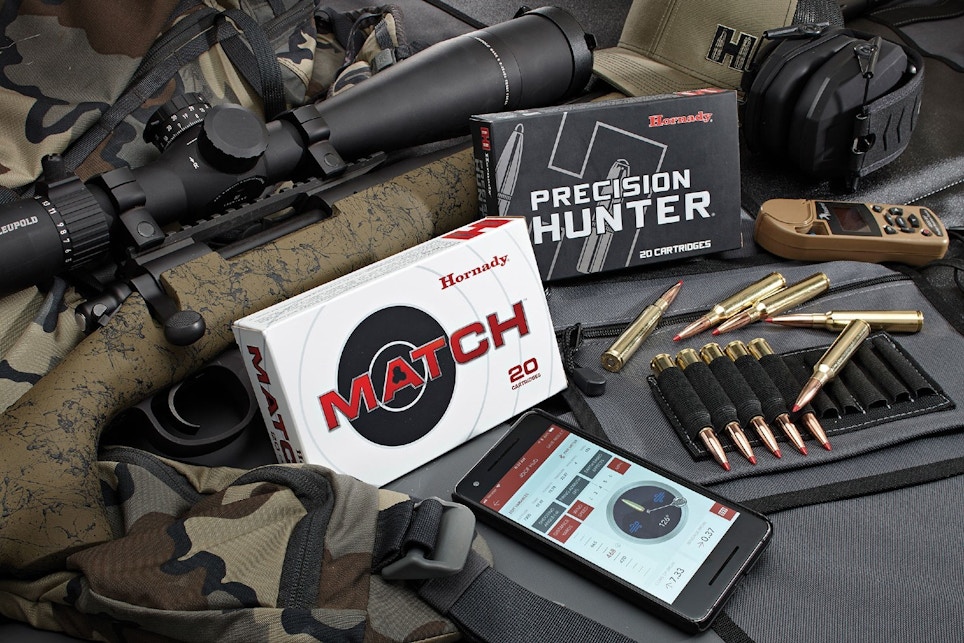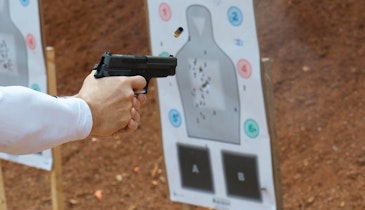In the not-too-distant past, stocking the correct rifle hunting ammunition for customers wasn’t all that difficult of a job. Unless you were among the biggest of big retailers with a huge ammo section, all you needed to do was make sure you had a variety of .30-30, .308 Win., 30-06, .243 Win. and .270 Win. to keep your customers stocked up. For those guys who hunted elk or other really big game, having a few loads in .300 Win. Mag. and 7mm Mag. was also a good idea.
My, how things have changed!
What’s with all the 6.8 ?O& and .457 %$#, anyway? Who comes up with all these new chamberings, and do hunters even buy guns in those calibers? Plus, does a retailer really need to worry about stocking ammo in these chamberings, or does doing so just create more aggravation — not to mention more work?
Let’s take a quick dip into the somewhat new and partially obscure cartridge pool to try and determine what’s what, and what’s critical to have on your shelves. For our purposes, we’ll mostly focus on calibers that have just come along in the last three or four years. And we’ll use the terms “chambering” and “caliber” interchangeably for simplicity.
Running Them Down
The big daddy of these calibers, though it’s not really new, is the 6.5mm Creedmoor. Originally designed as a long-distance target-shooting and competition round, the 6.5 Creedmoor is very much like the .260 Rem., a formerly popular long-range caliber that many love for hunting deer and other medium game. One key to the 6.5 Creedmoor’s popularity is the fact that it retains more velocity than the ever-popular .308 Win. at ranges beyond 400 yards, while also exhibiting less bullet drop. Incidentally, because of its light recoil, the 6.5 Creedmoor is a big hit with young hunters and others who are recoil sensitive. Verdict: As you already know, this is the hottest thing going, and you absolutely must keep some on hand or you will lose customers to other shops that do stock them.
The 6.5 Creedmoor’s little brother, the 6mm Creedmoor, is a necked-down version of the 6.5mm Creedmoor with the goal of similar ballistics and even less recoil. What makes it different from the much-loved .243 Win.? For one thing, it can use longer projectiles without a problem. Second, many hunters like the fact that it can fire a heavier bullet than the .243, which typically tops out at 100 grains. Verdict: Better stock this one, too, as it is a fairly popular round, and those who shoot it tend to go through a lot of ammo.
With those two cartridges behind us, let’s get into some of the newer ones from the last few years that many still don’t know much about. While not created as a deer hunter cartridge per se, the .224 Valkyrie is capable of taking mid-sized game and is a great coyote getter. It can fire a 90-grain projectile at about 2,700 feet per second (fps) and do so with very little recoil. Best of all, it can be chambered in AR-style rifles, which many prefer for varmint hunting these days. Verdict: If you cater to lots of varmint hunters, you might want to keep some of these handy. If you typically don’t sell much varmint ammo, it might not be worth your trouble.
The 6mm ARC (Advanced Rifle Cartridge) is a .243-caliber intermediate rifle cartridge introduced by Hornady in 2020. A useful cartridge good for everything from home-defense to hunting, it can be chambered in AR-style rifles or short-action bolt guns. With great ballistics, it outperforms the 6.8 SPC at long ranges with less recoil than common short-action calibers like .308 Win., and at least eight companies are already offering rifles in 6mm ARC. Verdict: This round is probably going to get more popular over the next few years. If you don’t begin stocking some now, you should look into doing so sometime in the near future.
Introduced in 2019, the 27 Nosler was introduced as somewhat of a replacement for the venerable .270 Win., which is still a very popular deer cartridge. It’ll drive a 150-grain bullet about 400 fps faster than the .270 Win., resulting in less drop (11 inches less at 500 yards) and more downrange energy. It’s also appropriate for bigger game, since it is loaded with bullets up to 165 grains. Verdict: While undoubtedly a great performer, there aren’t a lot of rifles chambered in 27 Nosler. Consequently, you can ignore this one unless you regularly have customers asking for it.
Is That All?
Believe it or not, we’re just getting started.
The 6.5 PRC (Precision Rifle Cartridge) was introduced in 2018 and is somewhat of a magnum version of the 6.5 Creedmoor. The 6.5 PRC pushes a 143-grain bullet at about 2,960 fps, creating 2,782 ft./lbs. of energy (fpe) at the muzzle. That’s about 250 fps faster than the 6.5 Creedmoor, equating to less bullet drop and more downrange energy. Developed as a long-range hunting round, this chambering has so far hit its target. Verdict: I think this is one to watch. The wise retailer will add some to his or her inventory to accommodate savvy hunters buying rifles in this caliber.
If you think that’s probably all the 6.5s to discuss, think again. The 6.5 Weatherby RPM (Rebated Precision Magnum), like many Weatherby magnums before it, does what it was designed to do — in this case, launch a bullet faster than other chamberings in the same caliber. It sends a 140-grain bullet out of the muzzle at about 3,075 fps, still delivering 1,500 fpe at 500 yards! Of course, it pays for that by being chambered in heavier rifles and producing more recoil. Verdict: Unless you live in a part of the country where people do a lot of hunting with magnums, this is one you probably don’t need to worry about.
While shooting bullets the same diameter as the .270 Win., the 6.8 Western cartridge, introduced just last year, uses a much shorter case, allowing it to be offered in short-action rifles. While it launches a 165-grain bullet at nearly 3,000 fps (2,970, to be exact), it can be loaded with heavier bullets up to 175 grains, making it more appealing than the .270 Win. for hunting larger game animals. Verdict: Since Winchester is chambering some of its popular rifles in this cartridge, there will be some demand. But you might be wise to wait a bit and see how this chambering catches on before deciding whether or not to offer it to customers.
Designed to put wild hogs down on the spot, the .300 HAM’R was designed by Wilson Combat for optimal terminal performance on tough-to-kill game. Based on an expanded .223 Rem. case, the HAM’r offers performance similar to the .30-30 Win., a proven big-game getter for generations. Best of all, it can be chambered in an AR-style rifle, which many hog hunters prefer for their high magazine capacity. Plus, its ballistics exceed those of the popular 300 Blackout that many hog hunters have embraced. Verdict: Since there aren’t many guns currently chambered in the .300 HAM’R, this is one you can leave off your shelf with likely little customer frustration.
Are You Done Yet?
Well, almost. Let’s take a quick look at two more.
The 300 PRC (Precision Rifle Cartridge) is designed to send a big bullet downrange at great velocity, thereby dispatching large, tough game animals in their tracks. Based on a .375 Ruger case necked down to .308, this caliber drives long 212- and 225-grain bullets at more than 2,800 fps, yielding 3,800 to 4,000 fpe at the muzzle. That will still get you nearly 2,600 fpe at 400 yards. Verdict: With well over a dozen gun manufacturers already making rifles in this chambering, it’s probably not one you want to ignore. Put some on your shelves to capitalize on what is likely to be a very popular caliber.
Last but not least is the .350 Legend. And while new — it was just introduced in 2019 — it is far different than the other chamberings we have discussed thus far. Rather than a long, fast bullet, the .350 Legend tends toward the shorter, slower end of the spectrum. Winchester developed the cartridge for use in states that ban most traditional centerfire rifle cartridges for hunting but that allow straight-walled cartridges even if fired from a rifle. The round packs more punch than the .30-30 Win., while producing less recoil than the soft-shooting .243, and is loaded in bullet weights from 150 to 265 grains. Verdict: If your business is in a state that doesn’t allow centerfire rifles for hunting but makes an exception for straight-walled cartridges, definitely make sure you have a selection of these on the shelf. If not, you can probably leave this one off your list.






